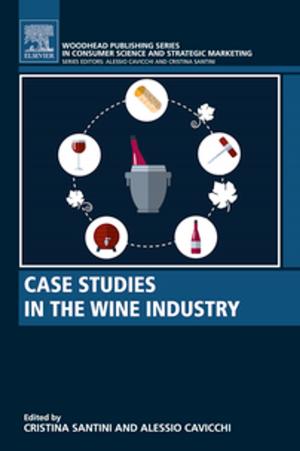The Produce Contamination Problem
Causes and Solutions
Nonfiction, Science & Nature, Technology, Food Industry & Science, Agriculture & Animal Husbandry| Author: | ISBN: | 9780124046863 | |
| Publisher: | Elsevier Science | Publication: | February 15, 2014 |
| Imprint: | Academic Press | Language: | English |
| Author: | |
| ISBN: | 9780124046863 |
| Publisher: | Elsevier Science |
| Publication: | February 15, 2014 |
| Imprint: | Academic Press |
| Language: | English |
Understanding the causes and contributing factors leading to outbreaks of food-borne illness associated with contamination of fresh produce is a worldwide challenge for everyone from the growers of fresh-cut produce through the entire production and delivery process. The premise of The Produce Contamination Problem is that when human pathogen contamination of fresh produce occurs, it is extremely difficult to reduce pathogen levels sufficiently to assure microbiological safety with the currently available technologies. A wiser strategy would be to avoid crop production conditions that result in microbial contamination to start.
These critical, problem-oriented chapters have been written by researchers active in the areas of food safety and microbial contamination during production, harvesting, packing and fresh-cut processing of horticultural crops, and were designed to provide methods of contamination avoidance. Coverage includes policy and practices in the United States, Mexico and Central America, Europe, and Japan.
- Addresses food-borne contaminations from a prevention view, providing proactive solutions to the problems
- Covers core sources of contamination and methods for identifying those sources
- Includes best practice and regulatory information
Understanding the causes and contributing factors leading to outbreaks of food-borne illness associated with contamination of fresh produce is a worldwide challenge for everyone from the growers of fresh-cut produce through the entire production and delivery process. The premise of The Produce Contamination Problem is that when human pathogen contamination of fresh produce occurs, it is extremely difficult to reduce pathogen levels sufficiently to assure microbiological safety with the currently available technologies. A wiser strategy would be to avoid crop production conditions that result in microbial contamination to start.
These critical, problem-oriented chapters have been written by researchers active in the areas of food safety and microbial contamination during production, harvesting, packing and fresh-cut processing of horticultural crops, and were designed to provide methods of contamination avoidance. Coverage includes policy and practices in the United States, Mexico and Central America, Europe, and Japan.
- Addresses food-borne contaminations from a prevention view, providing proactive solutions to the problems
- Covers core sources of contamination and methods for identifying those sources
- Includes best practice and regulatory information















